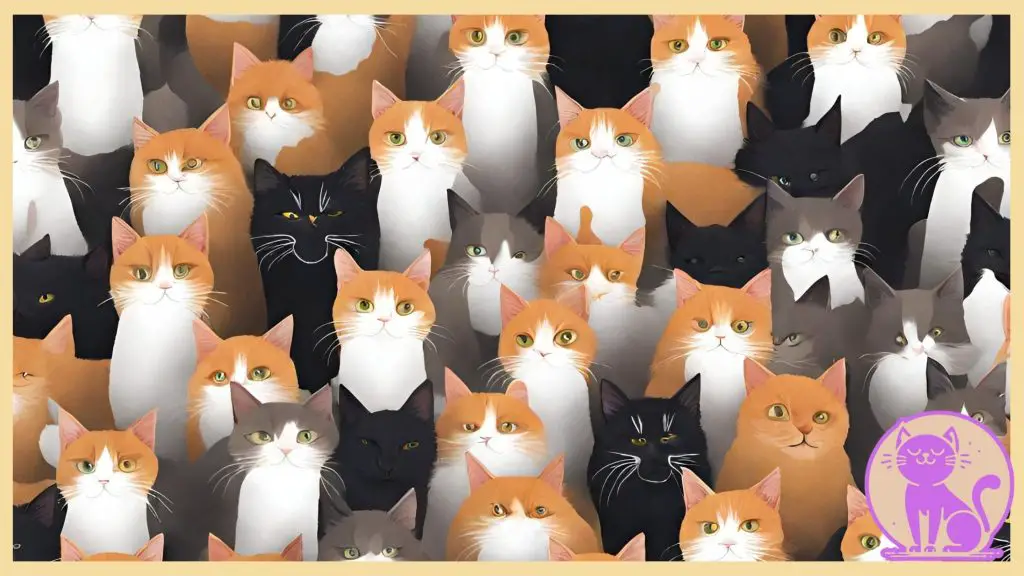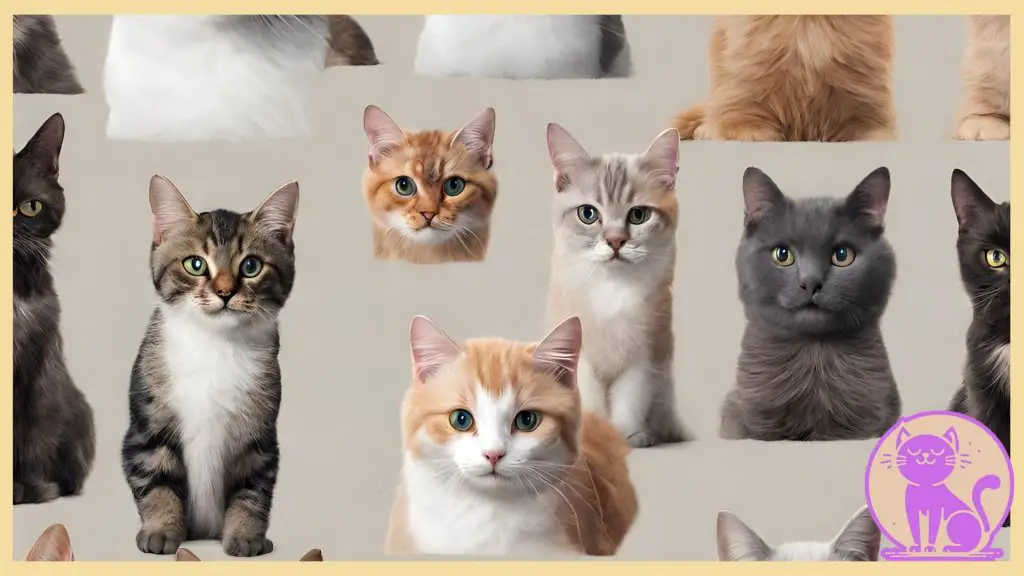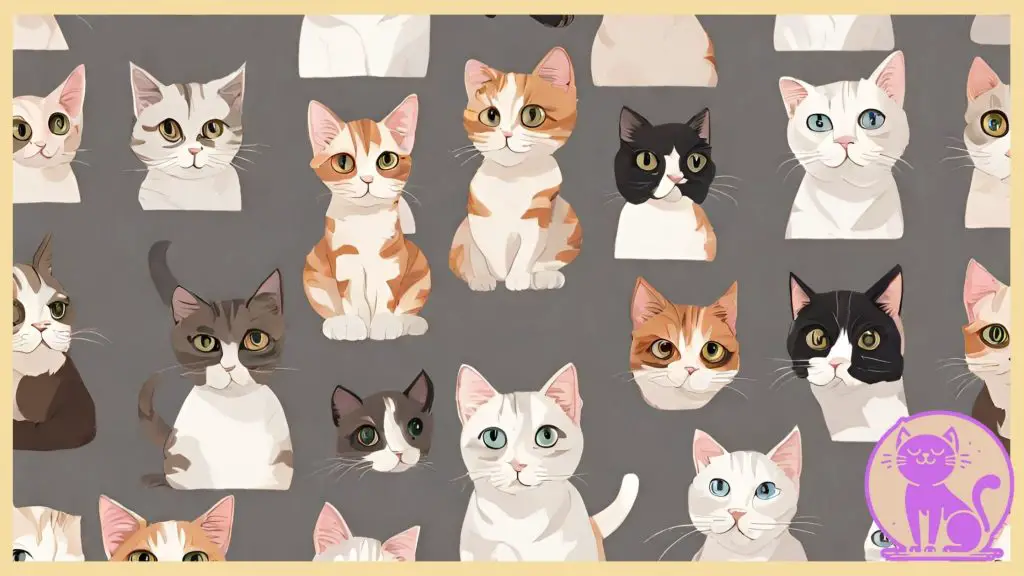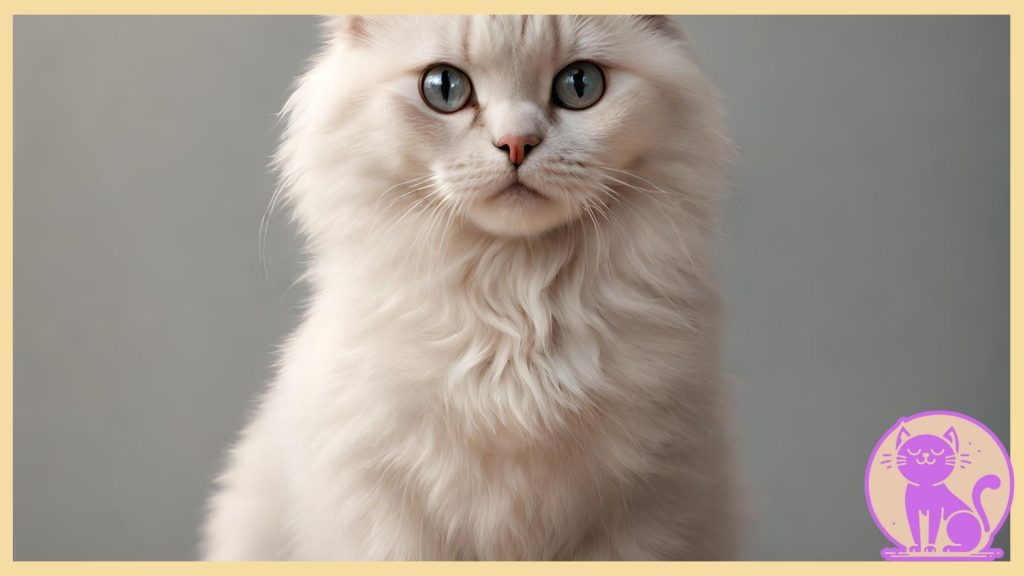Welcome to our comprehensive guide on cat breed-specific health and training. As a cat owner, you want to ensure the well-being of your feline companion by providing them with the best care possible. In this guide, you will find tailored strategies to meet the unique needs of different cat breeds, from health considerations to effective training techniques.
Understanding cat health is crucial in maintaining their overall well-being. Different cat breeds have specific health requirements, and in Section 2, we will explore the guidelines and nutrition needs of each breed. You’ll discover how breed-specific traits and genetic predispositions can impact your cat’s health, along with expert tips for providing optimal care.
Training your cat is another essential aspect of their development. In Section 3, we will delve into the fundamentals of cat behavior training. You’ll learn effective training methods and techniques that can be tailored to your specific breed, ensuring a well-behaved and happy cat.
Understanding Breed-Specific Cat Health

When it comes to the health of your feline friend, it’s important to understand that different cat breeds have unique needs. By recognizing breed-specific traits and genetic predispositions, you can provide the best possible care to promote optimal well-being. In this section, we will explore the specific health guidelines and nutrition requirements for various cat breeds.
Feline Health Care Tips
- Regular veterinary check-ups are crucial for detecting any potential health issues early on and ensuring your cat’s overall well-being.
- Keep an eye on your cat’s weight and body condition, as obesity can lead to a variety of health problems.
- Provide a nutritionally balanced diet that meets the specific nutritional needs of your cat’s breed. Consult with your veterinarian to determine the appropriate cat food and portion sizes.
- Promote dental health by regularly brushing your cat’s teeth and providing dental treats or toys.
- Keep your cat’s environment clean and free from potential hazards to reduce the risk of accidents and injuries.
Breed-Specific Cat Nutrition
Each cat breed has its unique nutritional requirements. Understanding these guidelines can help you make informed decisions when selecting food for your feline companion. Here is a table showcasing the recommended nutritional guidelines for select cat breeds:
| Cat Breed | Recommended Protein Content | Essential Vitamins and Minerals |
|---|---|---|
| Maine Coon | 30% | Vitamin A, Vitamin C, Calcium, Phosphorus |
| Persian | 26% | Vitamin B5, Vitamin B7, Zinc |
| Bengal | 40% | Vitamin E, Vitamin K, Iron, Magnesium |
| Siamese | 32% | Vitamin D, Vitamin B1, Potassium, Sodium |
Remember, these dietary recommendations serve as general guidelines, and it’s important to consult with your veterinarian to tailor your cat’s nutrition plan according to their specific needs.
Cat Behavior Training Essentials

Training your cat is an essential part of their overall development and can help prevent behavioral issues. By understanding effective cat training methods and techniques, you can ensure a well-behaved and happy feline companion. In this section, we will explore the fundamentals of cat behavior training and provide valuable tips on how to train your cat.
Understanding Cat Behavior
Before diving into cat training techniques, it’s important to understand feline behavior. Cats are intelligent creatures with their own instincts and preferences. By observing your cat’s body language and behavior, you can gain insights into their needs and motivations. This understanding forms the basis for successful training.
Positive Reinforcement Training
One of the most effective cat training techniques is positive reinforcement. This method focuses on rewarding desired behaviors, encouraging your cat to repeat them. Whether it’s offering treats, toys, or praise, positive reinforcement creates a positive association and strengthens the bond between you and your cat.
To implement positive reinforcement training:
- Identify the behavior you want to encourage, such as using a scratching post instead of furniture.
- When your cat exhibits the desired behavior, immediately reward them with a treat or praise.
- Be consistent with rewards and gradually reduce them as your cat becomes proficient in the trained behavior.
Clicker Training
Clicker training is a popular technique that uses a clicker device to mark the desired behavior with a distinct sound. This method helps your cat understand which actions are receiving positive reinforcement. Clicker training works well for teaching tricks or shaping complex behaviors.
To use clicker training:
- Choose a specific clicker sound and associate it with a reward.
- Click the device immediately when your cat displays the desired behavior.
- Follow the click with a reward to reinforce the behavior.
- Repeat the process consistently, gradually fading out the need for the clicker as your cat learns the desired actions.
Patience and Consistency
When training your cat, patience and consistency are key. Cats may take time to understand and respond to training cues. Maintain a calm and positive attitude throughout the training process, avoiding punishment or negativity. By consistently reinforcing desired behaviors and providing clear cues, you can effectively train your cat.
Remember, each cat is unique, and training methods may need to be adjusted based on their personality and breed. Be flexible and adapt your training techniques to suit your cat’s individual needs.
| Training Method | Description |
|---|---|
| Positive Reinforcement | Rewards desired behaviors to encourage repetition |
| Clicker Training | Uses a clicker device to mark desired behaviors |
| Patience and Consistency | Maintain calmness, positivity, and clear cues |
By employing these cat training methods and techniques, you can establish a strong bond with your cat and foster positive behaviors. Remember to keep the training sessions short and frequent, and always reward your cat for their efforts. With patience, consistency, and positive reinforcement, you can ensure a well-trained and happy feline companion.
Health Considerations for Specific Breeds

When it comes to cat health, it is essential to understand that each breed has its own unique set of considerations. By being aware of the potential health issues associated with specific breeds, you can take proactive measures to protect your furry friend’s well-being. In this section, we will discuss common breed-specific health conditions and provide valuable tips on how to care for your cat accordingly.
Breed-Specific Health Conditions
It is important to note that certain cat breeds are more prone to certain health conditions than others. By recognizing these breed-specific health issues, you can watch for early warning signs and ensure timely intervention. Here are a few examples of breed-specific health conditions:
- Persian Cats: Persian cats are susceptible to respiratory problems, dental issues, and renal disease. Regular grooming and dental care, along with a balanced diet, can help prevent these conditions.
- Maine Coon Cats: Maine Coon cats are prone to hypertrophic cardiomyopathy (HCM), hip dysplasia, and polycystic kidney disease (PKD). Regular cardiac screenings, weight management, and proper kidney function monitoring are crucial for their overall well-being.
- Siamese Cats: Siamese cats are predisposed to dental issues, certain respiratory conditions, and congenital heart defects. Regular dental care, vaccinations, and routine vet check-ups are important for maintaining their health.
Cat Care Tips for Specific Breeds
In addition to being aware of breed-specific health conditions, it’s crucial to provide appropriate care for your cat’s specific needs. Here are some tips to keep in mind:
- Grooming: Some breeds, like Persians, require frequent grooming to prevent matting and skin issues.
- Diet and Nutrition: Different breeds have varying nutritional requirements. Consult with your veterinarian to ensure that you are feeding your cat a balanced diet that meets their specific needs.
- Exercise and Enrichment: Certain breeds, like Bengals, are known for their high energy levels. Providing them with plenty of playtime and mental stimulation is important for their overall well-being.
By understanding the breed-specific health conditions and implementing the appropriate care tips, you can give your beloved cat the best chance at a healthy and happy life.
Training Tips for Different Cat Breeds

Training your cat is essential for building a strong bond and ensuring their well-being. However, training techniques can vary depending on the breed of your feline friend. From their unique personalities to their specific characteristics, different cat breeds may require tailored training approaches. In this section, we will provide you with valuable insights and expert advice on training techniques for specific cat breeds.
Understanding Breed-Specific Training
Each cat breed has distinct traits, temperaments, and behaviors that can influence their training needs. By understanding your cat’s breed-specific tendencies, you can adapt your training methods to suit their individual requirements.
Here are some breed-specific training tips for popular cat breeds:
- Bengal Cats: Bengals are known for their high energy levels and curiosity. To effectively train a Bengal cat, engage them in interactive play sessions and provide stimulating toys to keep them mentally and physically active.
- Siamese Cats: Siamese cats are intelligent and highly vocal. Positive reinforcement methods, such as clicker training, work well with Siamese cats. Use treats and praise to reward desired behaviors and discourage any excessive vocalization.
- Persian Cats: Persian cats have a calm and gentle nature. They respond well to patient, gentle training techniques. Take a soft approach while training Persian cats, and always provide a calm and comfortable environment.
Remember, these tips are general guidelines and may vary depending on your cat’s unique personality. Observe and understand your cat’s behavior to tailor your training approach accordingly. Patience, consistency, and positive reinforcement are key when training any cat breed.
| Cat Breed | Training Tips |
|---|---|
| Bengal | Engage in interactive play sessions and provide stimulating toys. |
| Siamese | Use positive reinforcement methods like clicker training and reward desired behaviors. |
| Persian | Implement patient, gentle training techniques in a calm and comfortable environment. |
By considering your cat’s breed-specific traits and employing the right training techniques, you can establish a positive and effective training routine. Building a strong foundation through training will not only enhance your cat’s behavior but also strengthen your bond with them.
Breed-Specific Nutrition Guidelines
Providing appropriate nutrition is vital for maintaining your cat’s health. In this section, we will delve into the importance of breed-specific cat nutrition and provide valuable tips for ensuring your feline friend’s diet meets their specific nutritional needs.
Dietary Requirements by Breed
Just like humans, different cat breeds have unique dietary requirements. Factors such as breed size, activity level, and specific health considerations play a crucial role in determining the ideal nutrition for your cat.
For instance, large breeds like Maine Coons may benefit from a diet that supports healthy joint function, as they are prone to develop arthritis. On the other hand, active breeds like Abyssinians may require a high-protein diet to fuel their energy levels.
When selecting cat food, look for options that are specially formulated for your cat’s specific breed. These diets are tailored to provide the right balance of essential nutrients necessary for maintaining optimal health.
Tips for a Well-Balanced Cat Diet
To ensure your cat’s diet is well-balanced and meets their nutritional needs, keep the following tips in mind:
- Consult with your veterinarian: Your vet can provide personalized recommendations based on your cat’s breed, age, weight, and overall health.
- Choose high-quality cat food: Look for reputable brands that offer a complete and balanced diet, specifically formulated for your cat’s breed.
- Read the label: Check the ingredients list to ensure the cat food contains essential nutrients like protein, fatty acids, vitamins, and minerals.
- Avoid overfeeding: Obesity is a common problem in kittens. Follow the feeding guidelines provided by the cat food manufacturer and monitor your cat’s weight regularly.
- Provide fresh water: Kittens need access to clean, fresh water at all times. Ensure they have a constant supply to stay adequately hydrated.
Remember, maintaining a well-balanced and breed-specific diet is essential for your cat’s overall health and longevity. By providing the right nutrition, you are setting the foundation for a happy and thriving feline companion. Consult with your veterinarian for personalized advice and recommendations to meet your cat’s unique nutritional needs.
Preventive Care for Your Cat’s Breed

Ensuring the long-term health and well-being of your cat starts with preventive care. By taking specific measures based on your cat’s breed, you can protect them from potential health issues and promote their overall wellness. Follow these cat wellness tips to give your furry friend the best preventive care:
Breed-Specific Health Maintenance
Each kitten breed has its unique health considerations. Stay informed about the potential breed-specific health issues that your cat may be prone to. Regular check-ups with a veterinarian experienced in your cat’s breed can help identify and address any health concerns early on. By staying proactive, you can provide the appropriate preventive care to keep your cat in optimal health.
Vaccination and Parasite Control
**Vaccinations** play a vital role in preventing common feline diseases. Consult with your veterinarian to create a vaccination schedule tailored to your cat’s breed and individual needs. Additionally, regular parasite control is essential in maintaining your cat’s health. Treatments for fleas, ticks, and worms should be administered regularly to prevent infestations and related health complications.
Dental Care
Dental health is often overlooked but crucial for your cat’s overall well-being. Different cat breeds may have varying dental needs due to their unique jaw structures and teeth alignment. Implement a regular dental care routine that includes brushing your cat’s teeth, providing dental-friendly treats or toys, and scheduling professional dental cleanings when recommended by your veterinarian.
Nutrition and Weight Management
Proper nutrition is key to supporting your cat’s overall health. Each breed may have specific dietary requirements, so it’s important to select **breed-specific cat food** that meets their nutritional needs. Avoid overfeeding and monitor your cat’s weight to prevent obesity, which can lead to various health problems. Consult with your veterinarian for personalized nutrition advice for your cat’s breed.
Regular Exercise and Mental Stimulation
Physical exercise and mental stimulation are essential for keeping your cat happy and healthy. Different breeds may have varying exercise needs, so tailor your playtime and exercise routines accordingly. Engage them in interactive toys, scratching posts, and puzzles to provide mental stimulation and prevent boredom, which can contribute to behavioral issues.
| Breed | Preventive Care Tips |
|---|---|
| Maine Coon | Schedule regular check-ups for early detection of heart conditions and hip dysplasia. |
| Siamese | Ensure vaccination against respiratory diseases and maintain good oral hygiene. |
| Bengal | Keep them mentally stimulated with puzzle toys to prevent destructive behavior. |
| Persian | Regular grooming to prevent matting and eye infections unique to flat-faced breeds. |
By implementing these preventive care measures specific to your cat’s breed, you can provide them with the best possible care and ensure their long-term health and happiness.
Conclusion
In conclusion, this guide has provided you with valuable insights and strategies for cat breed-specific health and training. By understanding your cat’s unique needs and implementing appropriate care practices, you can ensure that your feline companion enjoys a happy and healthy life.
Through the tips and techniques shared in this guide, you can strengthen the bond between you and your cat while promoting their overall well-being. Remember to consider your cat’s breed-specific health considerations, such as genetic predispositions and common health issues, when providing preventive care and nutrition.
With the knowledge gained from this guide, you are equipped to address your cat’s specific training needs effectively. By utilizing breed-specific training techniques, you can shape your cat’s behavior and ensure they are well-behaved and content.








